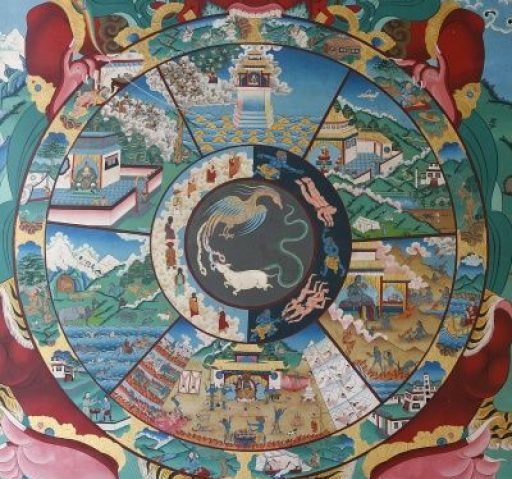Updated Jan 24, 2024
Beyond Korean Ghost Tales of the Patriarchy vs the Korean Matriarchal Way of Healing

In the search for justice, Korean women seem to populate tales of the supernatural and ghosts. In reality, they suffer from historical oppressions, social injustices, and political abuses.
However, once upon a time, women in Korea seemed to have enjoyed levels of social, political, and legal rights similar to men.
During the Koryo Period (918-1392), they were allowed to own property, divorce their husbands, and stay in their parent’s house, (Deuchler qtd in Lee 189), but all that changed in the Joseon Dynasty (1392 -1910) when neo-Confucianism took hold of the land. The way of the patriarchy took possession over Korea just as it did in China.
Jonghyun Lee points out that a popular Korean saying remains true for many women: “it is a sin to be a woman” (190). My own Korean mother was given a male’s name because her parents wanted her to be a male. She felt embarrassed to grow up with a male name and told me often she wished that she were a male because Korean men are treated special, but women are not treated well.
I grew up learning about Korean Shamanism and some of its Buddhist connections. My mother was very religious, and she found comfort in religion.
With neo-Confucianism, Korean women were then expected to remain loyal to men, specifically their fathers and husbands. One sees the rise of women searching for justice in a variety of genres, especially, in kung fu, wuxia pian (sword and sorcery), and ghost tales. Confucianism in Korea would be harsher than in China. Thus, women suffered even more. This suffering is part of the Korean tales of the supernatural and ghosts.
A Tale of Two Sisters
Directed and written by Kim Jee-won (1964), A Tale of Two Sisters became the most successful Korean horror film of all time when it was released.

The narrative is based on the folktale of Janghwa and Hongryeon (Rose Flower and Red Lotus) from the neo-Confucian Chosun Era (1392- 1910). A beautiful mother gave birth to the two daughters, but died at a young age. Their step mother was nice at first but when she gave birth to sons, she became mean. Janghwa grew up and was about to marry.
The stepmother faked a miscarriage by placing the blood of a rat in her bed. She lost face and her wedding was called off. Later the mother had one of the sons murder the daughter, Janghwa, in a pond.
But he also died during the killing. Her ghost would haunt the town, and each mayor would die from her ghost. She only wanted justice. The stepmother also abused Hongryeon. She would also die in the pond. Janghwa and Hongryeon are Cheonyeo Gwishin (virgin ghosts 처녀귀신) who never finished their lives, so they haunt humans wishing to fulfill their lost desires, hopes, and needs.
A young mayor would listen to the two ghosts and found out the truth. The stepmother would be executed. The father would remarry and the new wife would would give birth to twins: Janghwa and Hongryeon. The sisters are reborn.
The Korean film updated the story. It was later remade by Hollywood as The Uninvited (2009).
Works Cited
Deuchler, M. “Propagating female virtues in Chosun, Korea.” Women and Confucian Cultures in Premodern China, Korea and Japan.(142-157) Berkeley, University of California Press, 2003.
Lee, Jonghyun. “Shamanism and Its Emancipatory Power for Korean Woman.” Affilia 2009, 24 (186- 198).
–DOC NIRVANA
AKA DR. WAYNE STEIN
